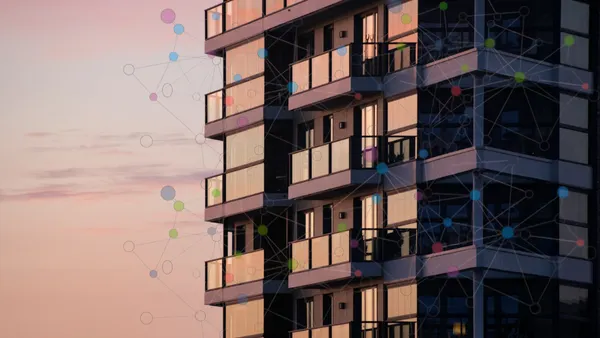Managed Wi-Fi has gained serious momentum in multifamily. On paper, it’s a dream: plug-and-play internet for residents, plus bulk billing upside for property owners. What’s not to love?
Plenty, actually.
Beneath the surface, many managed Wi-Fi deployments—especially those built on legacy architecture—are already falling behind. If you're banking on these systems to deliver long-term NOI and keep your property competitive, it's time to dig deeper.
The 6GHz lockout: Multi-PSK’s hidden cost1
Most managed Wi-Fi systems use WPA2 multi-PSK (Pre-Shared Key) authentication—each unit gets a unique password under a shared SSID. It’s simple and avoids the complexity of enterprise-grade 802.1X setups. But there’s a catch: this approach blocks access to the 6GHz band1.
Wi-Fi 6E opens up 1200 MHz of pristine, low-interference spectrum in the 6GHz range. But WPA3 is required to access it—WPA2 won’t cut it. So if your network runs on WPA2 multi-PSK, your residents can’t take advantage of Wi-Fi 6E, even if their devices support it.
Why it matters:
6GHz enables multi-gigabit speeds and better performance in high-density environments. Without it, residents may feel like they're stuck in the past—especially as new devices flood the market with Wi-Fi 6E compatibility.
5GHz bottlenecks: Built-in limitations
Managed Wi-Fi systems often prioritize stability and backward compatibility over performance. As a result, they default to conservative 40 MHz channel widths on the 5GHz band—even though modern setups support 80 MHz or 160 MHz.
This leads to underwhelming throughput. A common 2x2 MIMO client on a 40 MHz 5GHz channel might top out around 380 Mbps in ideal conditions. That’s the ceiling, not the average—and it won’t improve without rethinking the architecture.
Why it matters:
Marketing might promise “gigabit” speeds, but real-world results often disappoint. And since bulk contracts typically span 5–10 years, you could be stuck with underdelivering tech long after resident expectations have moved on.
“Up to 1Gbps” is already obsolete
“Up to 1Gbps” used to sound impressive. But today, it’s quickly becoming the new “basic cable.” Major ISPs and fiber upstarts are offering 2, 5, even 10Gbps service directly to consumers.
Meanwhile, many managed Wi-Fi setups aren’t built to scale that high, since multigigabit Wi-Fi performance isn’t an option. Upgrades are rarely simple, and often not feasible without an expensive network overhaul.
Why it matters:
That “fast, reliable internet” line starts to lose credibility when nearby competitors are offering 5x the speed. As expectations evolve, outdated infrastructure becomes a liability.
The smarter path: Fiber-to-the-Unit (FTTU)
If you’re serious about future-proofing your connectivity, it’s time to think beyond managed Wi-Fi. Fiber-to-the-Unit (FTTU) offers a compelling alternative that doesn’t force compromises.
By bringing dedicated fiber into each unit and deploying a resident-specific gateway, FTTU combines the economics of bulk service with the performance of a private, in-home network.
This approach unlocks new, cost-effective hardware options—from compact gateways to mesh systems—designed specifically for residential performance. These systems can support multiple APs per unit, enabling full-home coverage, seamless roaming, and true 6GHz capability.
With FTTU, you can:
- Deliver symmetrical 2.5Gbps+ today, with a roadmap to 10Gbps
- Tap into 6GHz Wi-Fi with WPA3-secured authentication
- Use multiple APs per unit for better coverage and signal quality
- Support modern devices and use cases like gaming, video conferencing, and smart home tech
- Grow NOI through long-term bulk contracts without getting locked into aging infrastructure
The Bottom Line
Managed Wi-Fi checks the “community internet” box—but it may be boxing you into yesterday’s tech.
- WPA2 multi-PSK locks you out of 6GHz.
- Conservative 5GHz planning throttles speeds.
- “1Gbps” promises are increasingly underwhelming.
Before you commit to a managed Wi-Fi contract for the next decade, take a hard look at what it’s really offering—and what it’s not. FTTU isn’t just faster. It’s smarter, more scalable, and built for what modern residents expect from their internet.
- Certain hardware manufacturers may have workarounds to mimic this behavior, but without 802.1X authentication they cannot overcome the native incompatibility of the ‘managed Wi-Fi' experience’ via WPA2 with multi-PSK authentication and the available 1200Mhz of 6GHz spectrum








